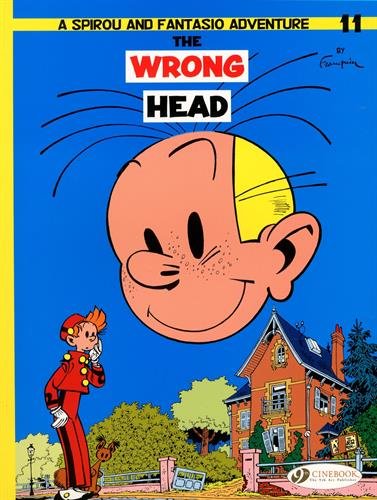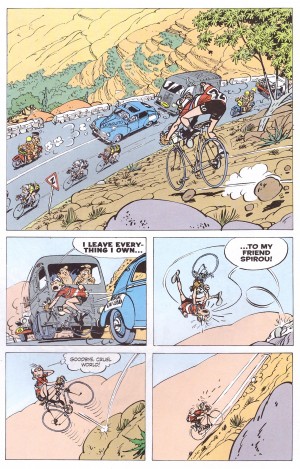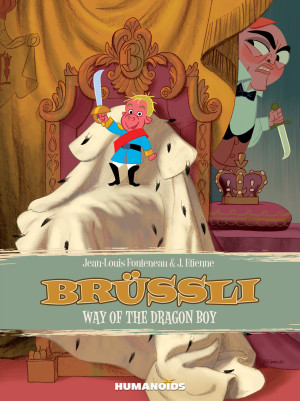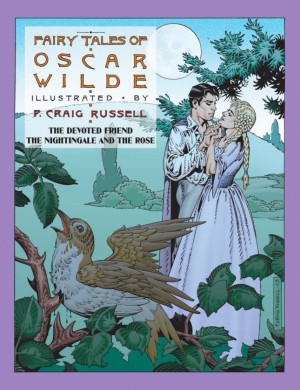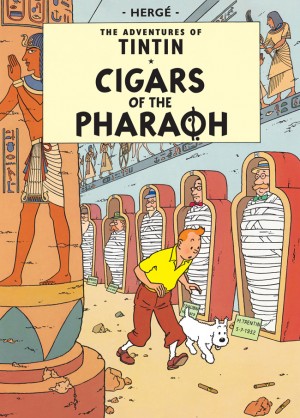Review by Frank Plowright
A bizarre cover image immediately draws attention to The Wrong Head, and André Franquin plays fair with readers. While not exactly as pictured on the cover, where the more interesting rickety dilapidated building replaces the actual location, this event occurs in the story.
Originally serialised in 1954, this is Franquin’s sixth full length Spirou and Fantasio album, and continues the progress seen in The Dictator and the Mushroom. As in his previous work, much of the story remains a chase sequence, but far more inventively plotted, and with some wild twists.
The opening sequence has Fantasio seemingly lying to Spirou, and accused of two robberies. The most serious involves an antique gold mask, and TV footage appears to show Fantasio committing the crime. Remember the era. This was fifty years before widespread video manipulation, so any televised footage was as occurred, and Franquin makes clever use of this to convince readers. Spirou can’t believe his friend is responsible, and sets out to discover the truth, beginning by investigating the new occupants of the abandoned house in Fantasio’s neighbourhood.
Franquin is one of the greats of Franco-Belgian cartooning. His art flourished before his plotting abilities, and is wonderful throughout The Wrong Head. The featured page is from a sequence when Fantasio on the run is disguised as a participant in a major cycle race. The top panel is a typically busy scene from a man who never short-changed on background detail, and the remainder the second sequence of Fantasio completely out of control on the bicycle. The movement is wonderful, and completely differs from the previous page of Fantasio bumping down a hillside. Many pages occur externally, and Franquin supplies dozens of background people, all occupied and lively. A single panel before the cycle race has Spirou running through in the foreground, but three cyclists in the background, one chatting with his coach, another kneeling and adjusting the wheel of his bike being held by a coach as the third looks on. Deeper into the panel pedestrians walk by. This is all in the smallest of eight panels on the page.
Some liberties are taken with the plot. At one point there’s a gap of three months to sustain the suspense, which is capricious yet artificial, and the criminal mastermind is somewhat shoehorned in. These, however, are relatively minor elements of what’s a glorious slapstick romp.
It seems as if the adventure didn’t originally meet the page count for album publication, as two full page illustrations occur, seemingly later insertions. While very nice images, they interrupt the flow of the story, distracting instead of enhancing. Far more welcome is a two-page back-up strip featuring the Marsupilami, last seen in The Marsupilami Thieves. The strange spotted jungle creature with the extraordinarily long tail is determined to stop a cat from eating newly born chicks. Franquin modifies his style for this, using smaller panels and inking more heavily, and the madcap antics of Marsupilami are always fun. And thankfully Cinebook got around to translating its solo series starting with The Marsupilami’s Tail.
